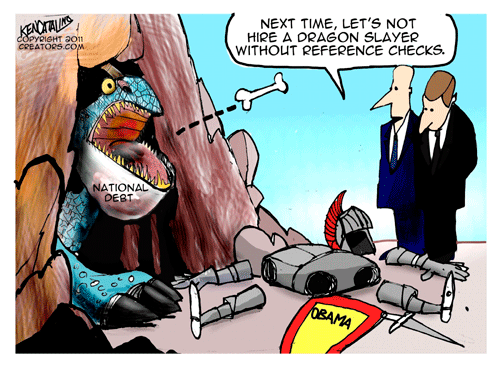First I’d like to draw your attention to this excellent 3 part series by Alexandra Odynova of The Moscow Times–
- The Day a Soviet Paradise Stood Still, 22 April 2011
- On the Trail of a Deadly Chernobyl Killer, 25 April 2011
- A Liquidator Searches for the Truth at Chernobyl 25 Years On, 26 April 2011
From a section of the last piece titled More Disasters Ahead?–
The key problem, he (Glushchenko) said, is plant lifetime – which is limited at 25 to 30 years but routinely extended for financial reasons by many countries.
Of the 444 reactors currently in operation worldwide, 178 have exceeded their lifetime. In Russia, 19 out of 32 reactors will be working past their expiration date by 2013, Glushchenko said.
There is no better illustration to his point than the Fukushima plant, which was commissioned in 1971 and also had its official lifetime extended.
Despite warnings from global nuclear safety bodies, Fukushima continued to operate – until a tsunami hit in March, disabling the emergency generators and putting the reactor on the brink of a meltdown. A handful of “nuclear samurais” are still trying to clean up the disaster, much like Glushchenko and his team did at Chernobyl 25 years ago.
“Liquidators” is what the 600,000 Russians who worked on containing Chernobyl called themselves. From The Telegraph–
Chernobyl’s managers initially tried pumping water into the reactor core but when this proved unsuccessful they turned to dumping boron carbide and a total of 4,000 tons of lead, sand and clay on the facility.
The material was dropped from helicopters, and pilots on the initial flights received abnormal doses of radiation as they hovered in stationary mode over the reactor.
Later they dumped their loads while moving over the reactor, causing additional destruction around the area that may have assisted the spread of the radiation.
…
In October, a concrete shelter, called a sarcophagus, was completed to prevent further leakage of radiation from reactor number four and allow the other reactors at the Chernobyl plant to continue producing power for Ukraine.
How are things going at our new Chernobyl?
Leaks Probed as Japan Moves to Cool Reactors
By MITSURU OBE, The Wall Street Journal
APRIL 26, 2011, 5:35 A.M. ET
(A)n apparent leakage in the pressure vessel of the No. 1 reactor has left the fuel partially exposed above the level of the cooling water, with a steady supply of fresh water keeping it cool. By filling up the entire containment vessel, Tepco hopes to submerge both the fuel and the pressure vessel in water.
…
Concerns also have grown about a possible leak in the spent fuel pool of Reactor No. 4, said Hidehiko Nishiyama, spokesman of the government’s Nuclear and Industrial Safety Agency. The pool holds the most fuel rods among the complex’s six reactor buildings, including both spent and active nuclear fuel.
…
A week-old operation to drain radioactive water from the complex continues to suffer fresh setbacks. While the operator has focused on dealing with water in Reactor No. 2, seen as the most radioactive in the complex, the flooding situation has slowly deteriorated in Reactors Nos. 3 and 4, where the levels of water in the basements of their respective turbine buildings have increased in the last 10 days.Radiation contamination also has spread from the turbine building of No. 3 to the Reactor No. 4 turbine building, raising the possibility that water in No. 4 may need to be cleansed of radiation before being stored in one of the makeshift tanks Tepco is planning to build.

 On this day in 1986,
On this day in 1986, 
 The holiday is over, besides the candy, you most likely have a refrigerator full of leftovers and one of them may be a ham bone. Don’t throw it out just yet, there is still another use for it, soup. Served with a salad and a hearty bread, these soups make a hearty, nutritional meal meal that is also budget conscious. Accompanied by a good beer, this is real comfort food on a chilly Spring evening.
The holiday is over, besides the candy, you most likely have a refrigerator full of leftovers and one of them may be a ham bone. Don’t throw it out just yet, there is still another use for it, soup. Served with a salad and a hearty bread, these soups make a hearty, nutritional meal meal that is also budget conscious. Accompanied by a good beer, this is real comfort food on a chilly Spring evening. 1 lb. dry navy beans
1 lb. dry navy beans What does “Winning The Future”, the inept slogan of the Obama 2012 campaign, really mean for the middle class and poor, especially the African American, Hispanic and other minority communities? What would re-electing Obama in 2012 mean for the economy? For Glenn Ford at the Black Agenda Report, it means a further economic decline, especially for the Black community where
What does “Winning The Future”, the inept slogan of the Obama 2012 campaign, really mean for the middle class and poor, especially the African American, Hispanic and other minority communities? What would re-electing Obama in 2012 mean for the economy? For Glenn Ford at the Black Agenda Report, it means a further economic decline, especially for the Black community where  Paul Krugman:
Paul Krugman:
Recent Comments